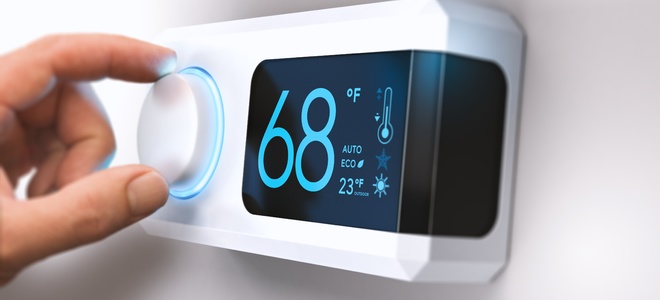Efficiency with HVAC Systems
There are a plethora of approaches to achieving energy efficiency with HVAC systems in the home or office, but many users struggle with the idea of leaving a consistent desired temperature vs. setting back the temperature during the evening and nighttime.
There are two basic trains of thought when it comes to HVAC thermostat set points and schedules…
- Find a temperature that works for you, and leave it set there. For example – You like 72 degrees as a cooling set point during the summer, so you leave your thermostats set on “cool” and 72, no matter what the outdoor conditions or time of day.
- “Set back” the system at night, when you aren’t up and around the house. For example – You like 72 degrees as a cooling set point during the summer, but you would rather not use the electricity to keep the main living area conditioned while you sleep. You either shut the system off at night and let the indoor temps rise, or you choose a more modest set point like 74 degrees so that the system runs less.
Those that argue for point #1 claim it is easier for your system to establish and maintain a temperature, instead of letting it fall behind and recuperate after a setback period. Those who argue for point #2 claim that the money you save during setbacks outweighs the extra effort exerted getting back to the desired “occupied” temperature.
In my opinion, it depends a bit on what type of HVAC system you have. Those of us with inefficient heating or cooling systems can benefit from a small setback during unoccupied periods. I would keep this to only a couple of degrees. Those of us with more efficient staged or modulating HVAC systems should practice set it and forget it.
Systems that modulate are able to run at a fraction of total capacity, meaning that once comfort temperature is established in the home, the system can simply “idle” along to efficiently maintain that set point. Highly efficient systems, like modulating gas boilers and Mitsubishi heat pumps, are frequently misused by the homeowner turning them on and off or way up or down instead of leaving the temperature consistent and allowing the technology to find an efficient balance point for required capacity.
The bottom line is this – setbacks are OK when used within reason but should be very small or nonexistent when high-efficiency equipment is utilized.
Pete Robitaille
East Coast HVAC
President
[/av_textblock]

